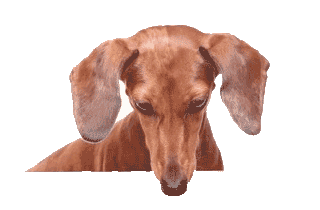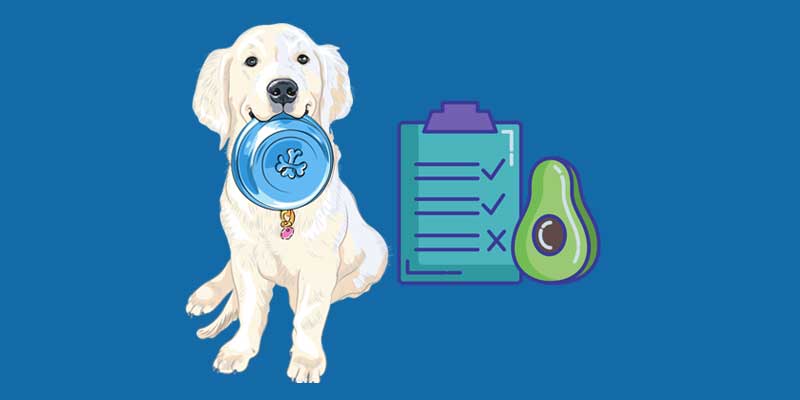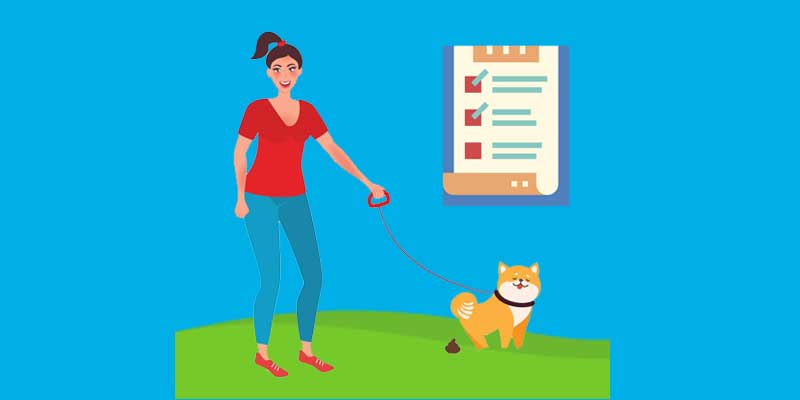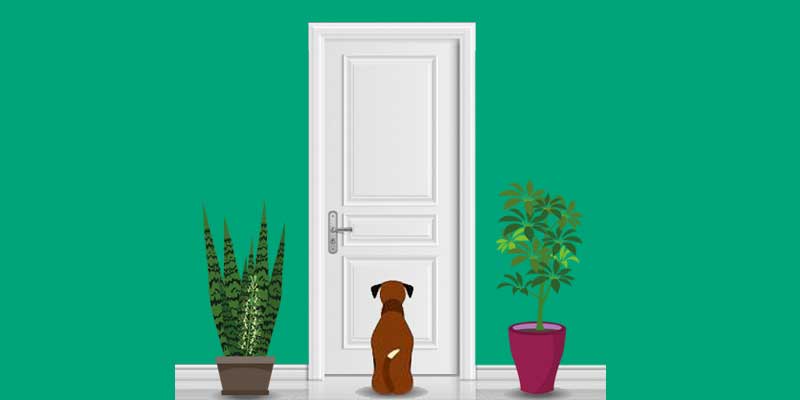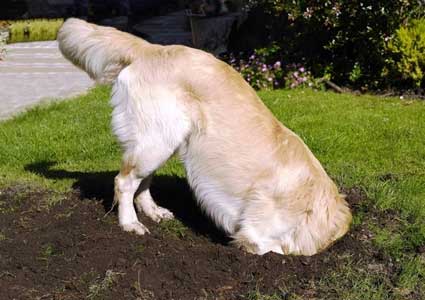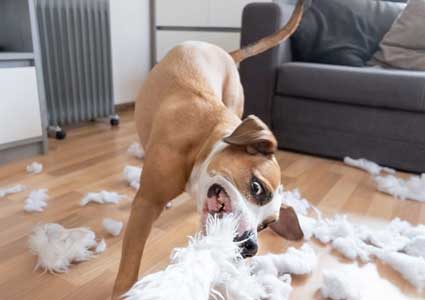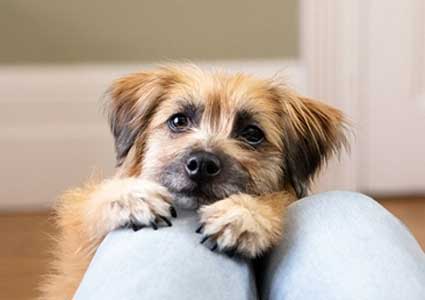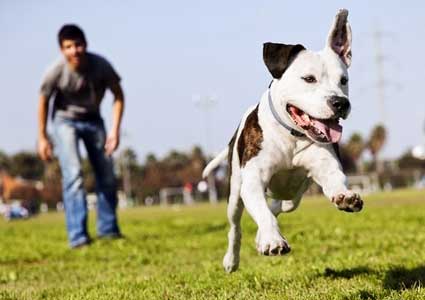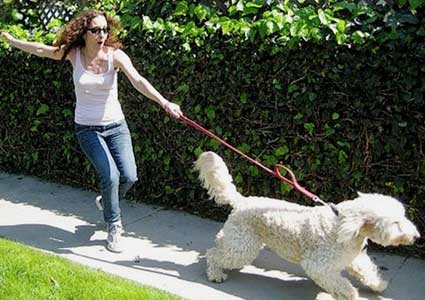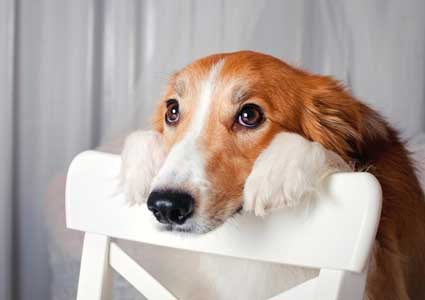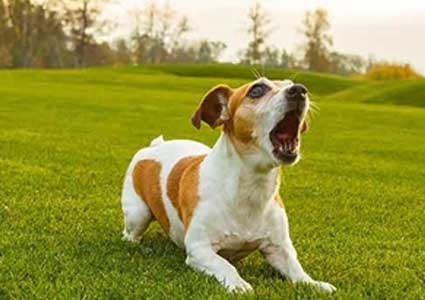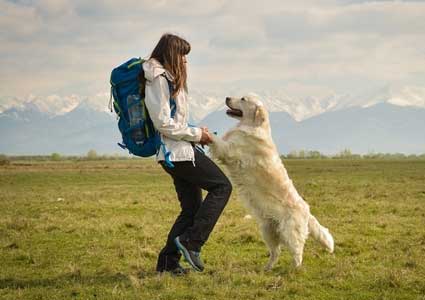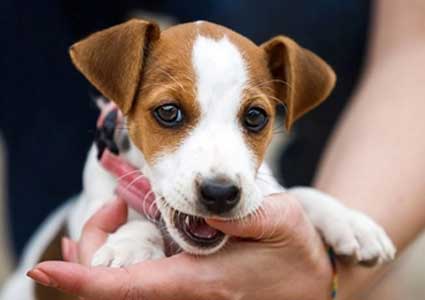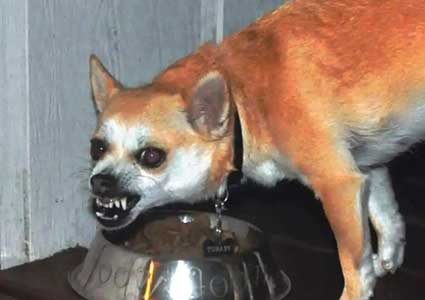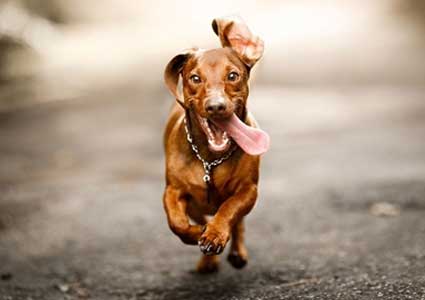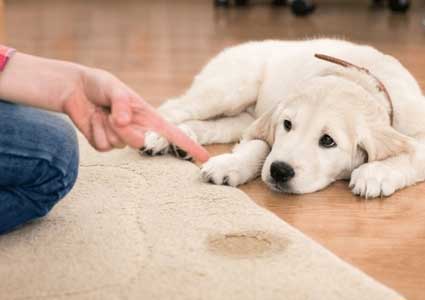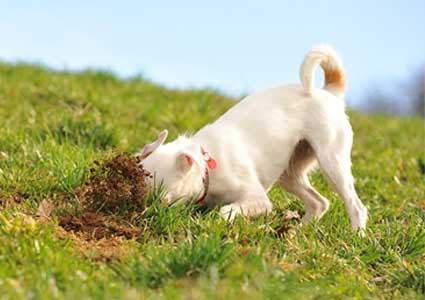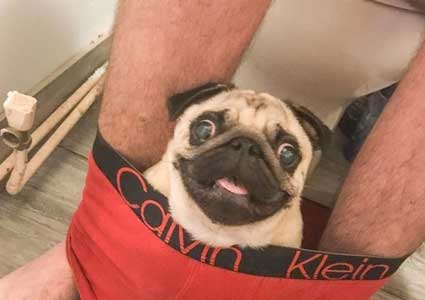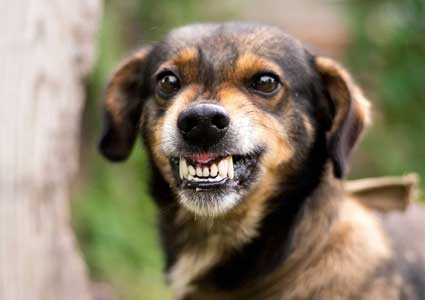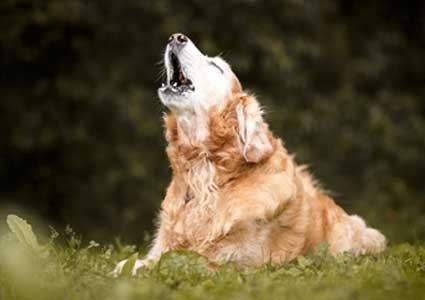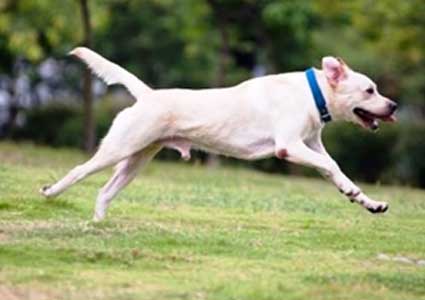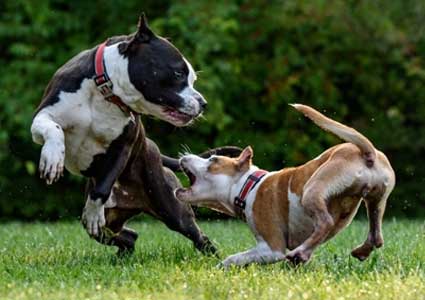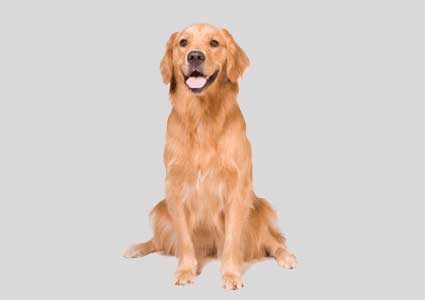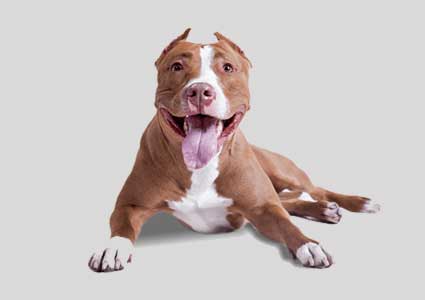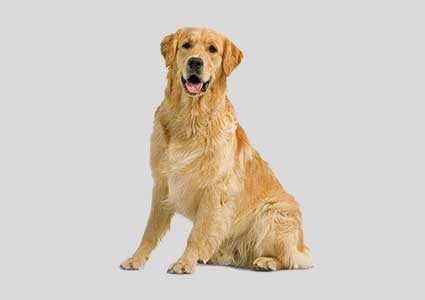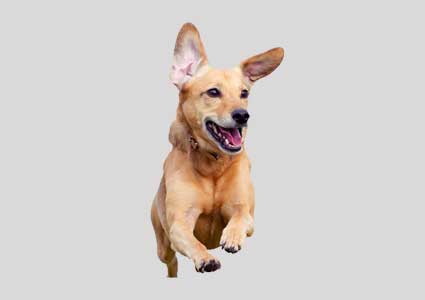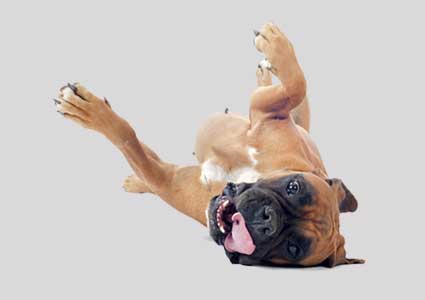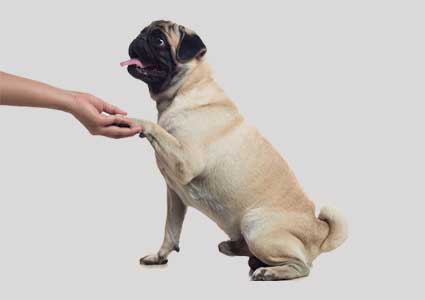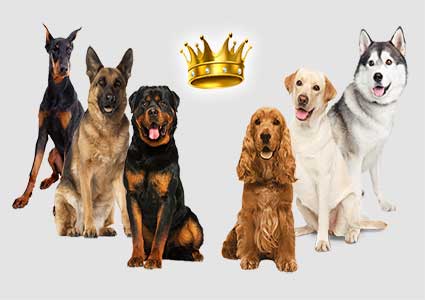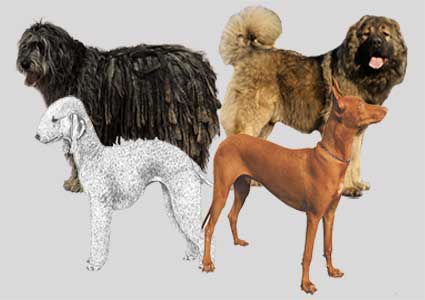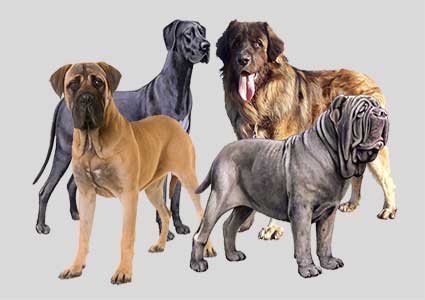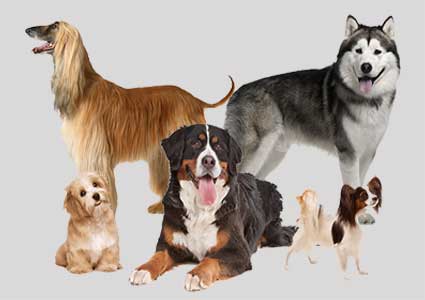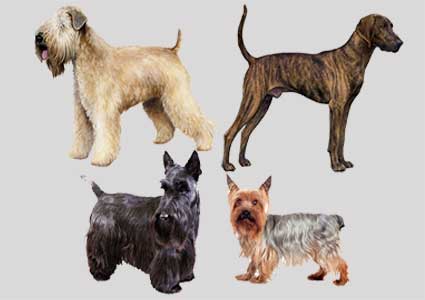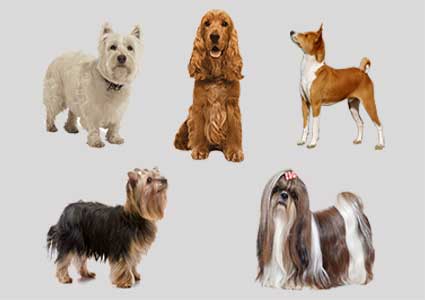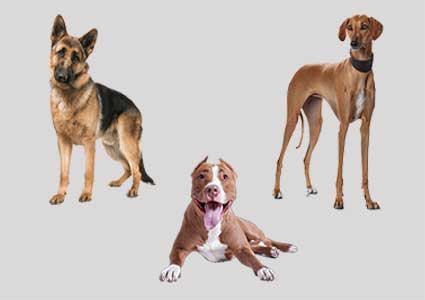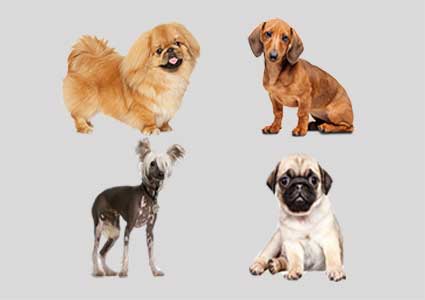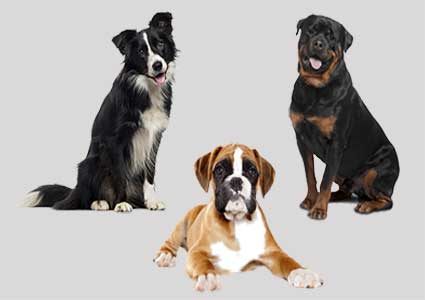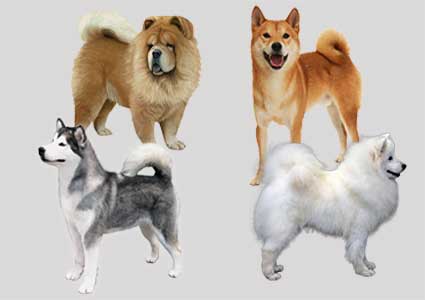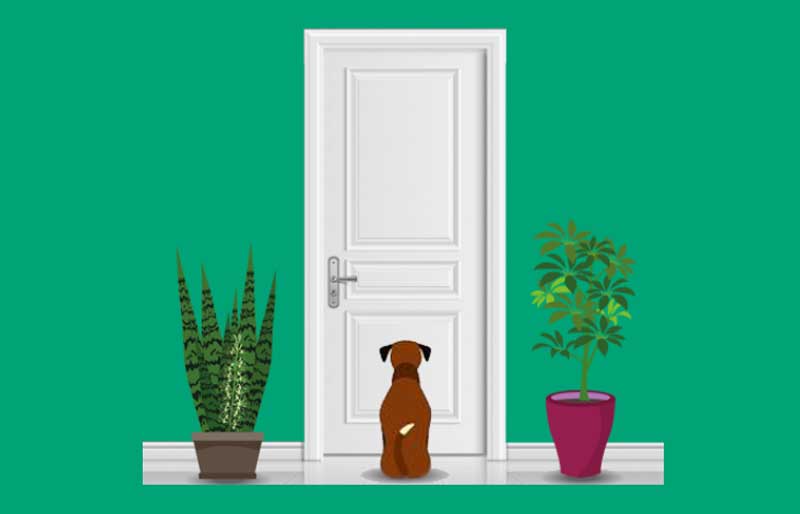
This is the ultimate guide on how to help a dog with separation anxiety.
In this guide, you’ll learn all about:
- What causes separation anxiety in your dog
- How to treat minor dog separation anxiety
- How to deal with severe separation anxiety
- Tips to help your pooch relax when alone
Let’s dive right in.
Dog Separation Anxiety Guide Contents
What is Dog Separation Anxiety?
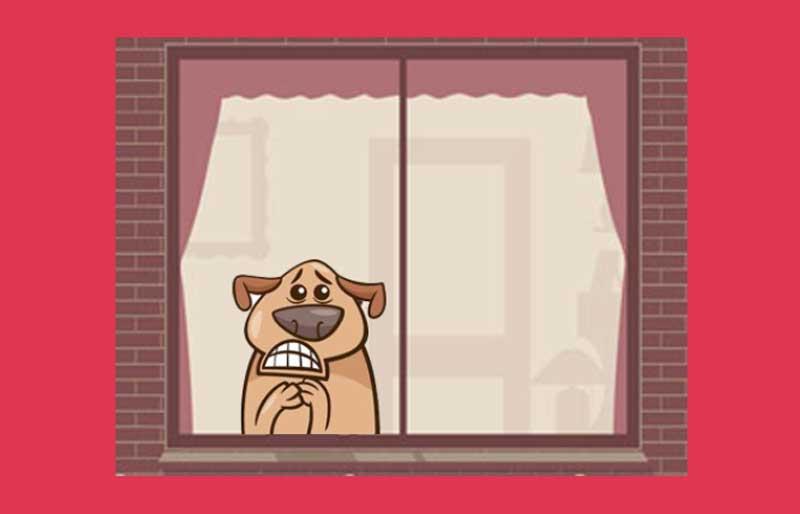
Dogs are pack animals. They like being close to their pack (you) at all times.
Most dogs can be left alone for some time without issues, but some dogs may need a little training.
If your dog shows any of the below symptoms when left alone at home, then he may be suffering from separation anxiety.
Signs & Symptoms of Dog Separation Anxiety
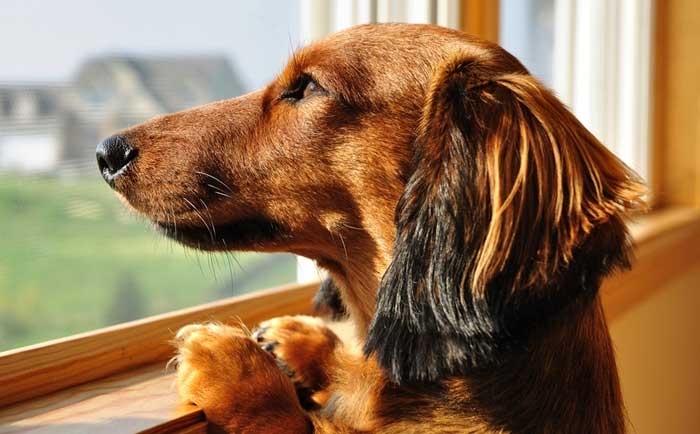
Separation anxiety is different from general misbehavior and it can lead to severe destructive habits.
A dog that experiences separation anxiety may display some or all of the below behaviors.
These symptoms can vary in intensity from mild to severe based on your dog’s history, breed, age, and several other factors.
Before you leave Home
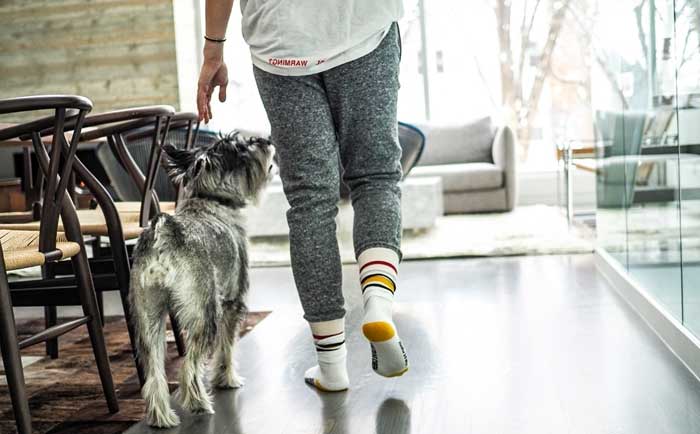
As you get ready to leave the house, your dog may appear nervous and start looking at you suspiciously.
He could start following you around from room to room and refuse to leave your side.
As you get ready to exit, his nervous symptoms may become worse, and he may start to pace around frantically and pant loudly.
After you Leave
After you leave home, your dog may display one or more of the below behaviors.
Lengthy barking, whining and howling
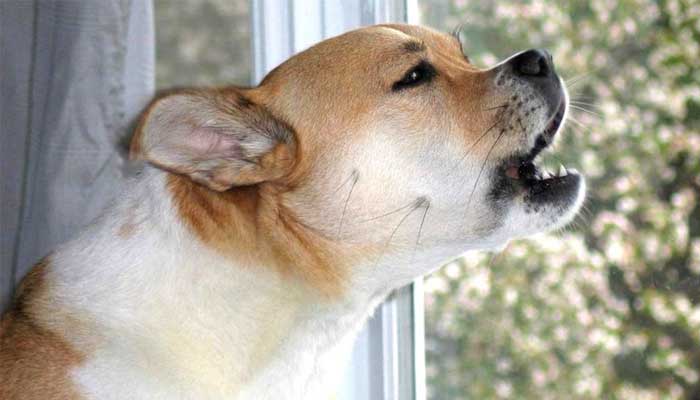
When you leave the house, your dog may start barking or howling continuously for long periods.
He might even whine and howl the entire time you are away. This will definitely annoy the neighbors, and they will let you know about it when you return.
Destructive chewing
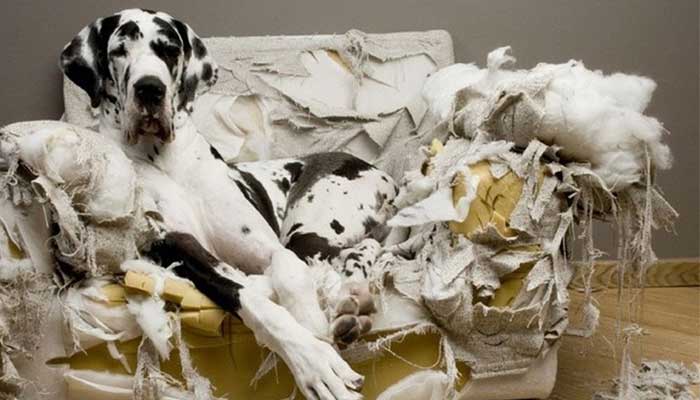
Your dog may chew into and destroy your furniture or household items.
He may chew off the corners of tables. He may chew into your couch or chairs. He may tear through or rip apart your footwear, clothing, or pillows.
Your dog may chew up items that carry your scent and break them into small pieces. He might curl up in the debris of the broken items to create a blanket of your scent around him for security.
The final result of this rampage can vary from small scale damage to large scale destruction of your property.
Digging, scratching, and biting
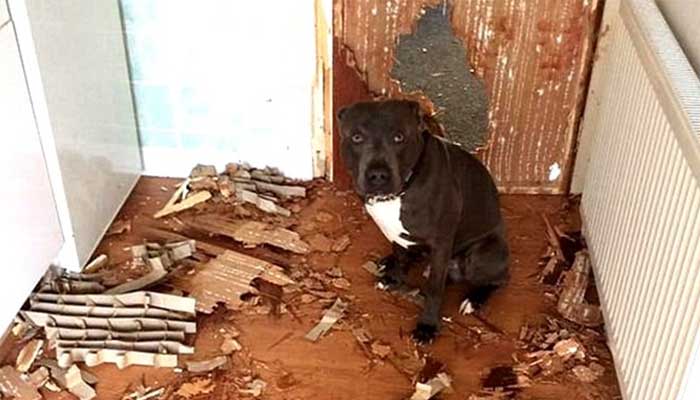
Your dog may get into a frenzy and attempt to get back to you by breaking through the doors or windows.
He may dig, chew, and repeatedly bite at the door frames and window sills. This can leave deep cuts and scratches in your door and window frames.
Indoor urination and defecation
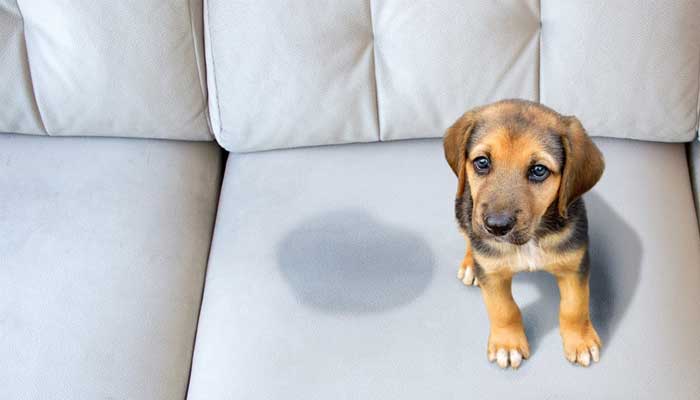
Even if your dog is housebroken, he may poop and pee inside the house when you leave him alone.
His anxiety might lead to diarrhea, even though he is otherwise healthy.
Excessive panting and drooling
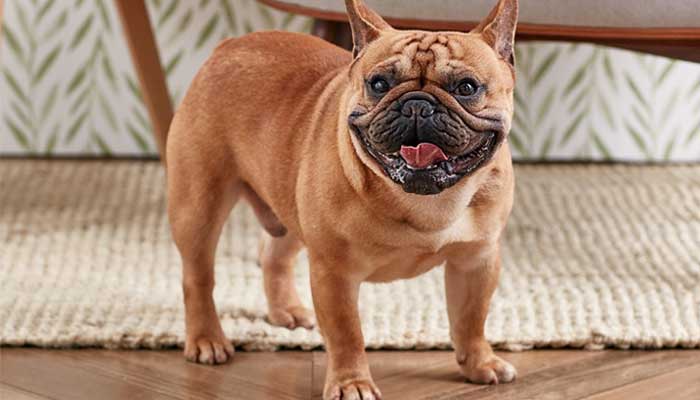
Your dog may salivate and drool a lot, which will leave his chest and chin soaked in saliva.
He may pant loudly and continuously and have difficulty breathing.
Loss of appetite
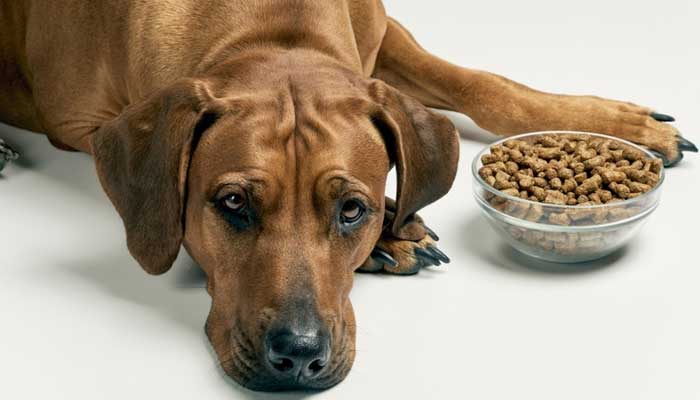
Your dog’s anxiety can bring about hormonal changes that cause loss of appetite.
When you leave, your pooch may refuse to eat and ignore the dog food you left for him until you return.
Extreme pacing, trembling, and frantic movements
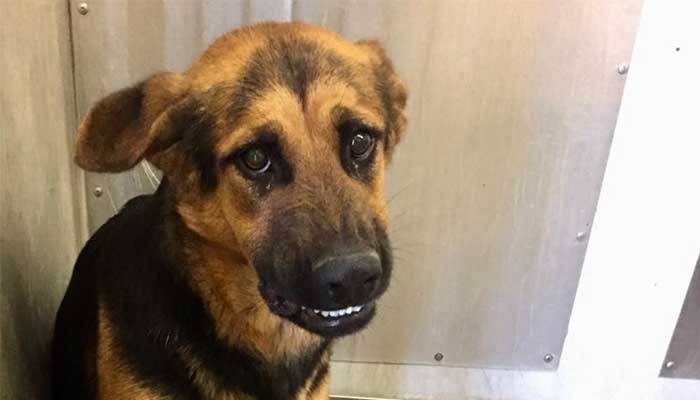
Your dog may be unable to settle down in one place and keep pacing back and forth. He may tremble and move erratically here and there.
He may jump up and down the furniture and topple items like lamps and vases. This can leave a trail of mess around your home.
Coprophagia
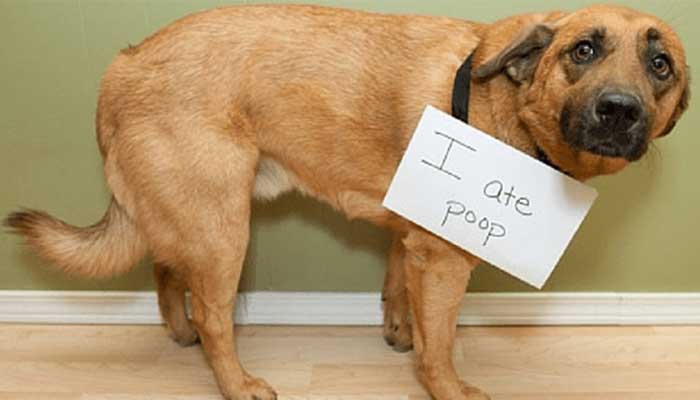
Your dog may poop and then eat it entirely or partially.
If this behavior happens due to separation anxiety, then it is usually not displayed when you are present.
Self-injury
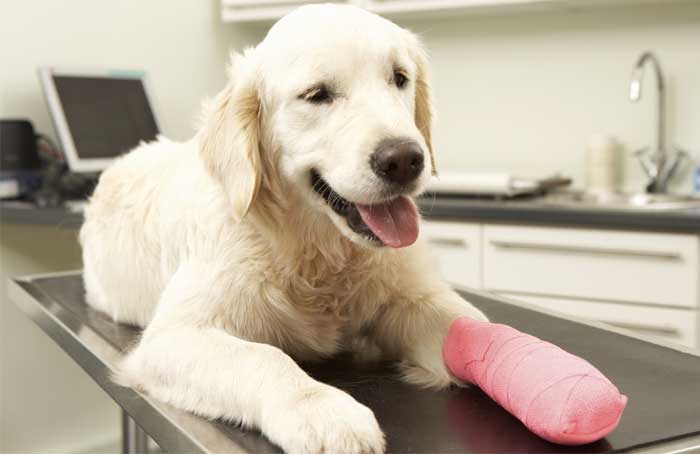
Intense and frantic chewing and digging of hard objects like furniture and wooden frames can cause damage to your dog’s teeth, paws, and nails.
This may result in cuts, scrapes, and bleeding. If your dog is crated when he gets an anxiety attack, then his escape attempts may cause even more injury.
Escaping

Your dog may actually find a way to break out of your house and get outdoors.
He will then eagerly search for you and may accidentally injure himself during his anxious escapade.
These symptoms of separation anxiety are usually most intense within the first 15-20 minutes of you leaving your dog alone.
When you return Home
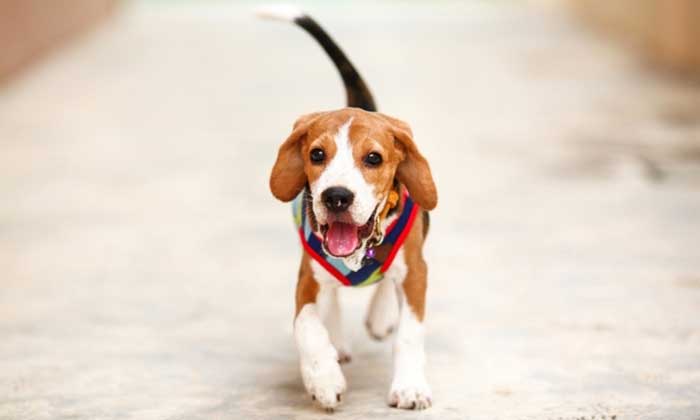
Your dog may become utterly crazy with joy when you return. He could get overexcited and even try to jump on you or climb over you.
He might start following you from room to room and refuse to leave your side.
What Causes Separation Anxiety In Dogs?
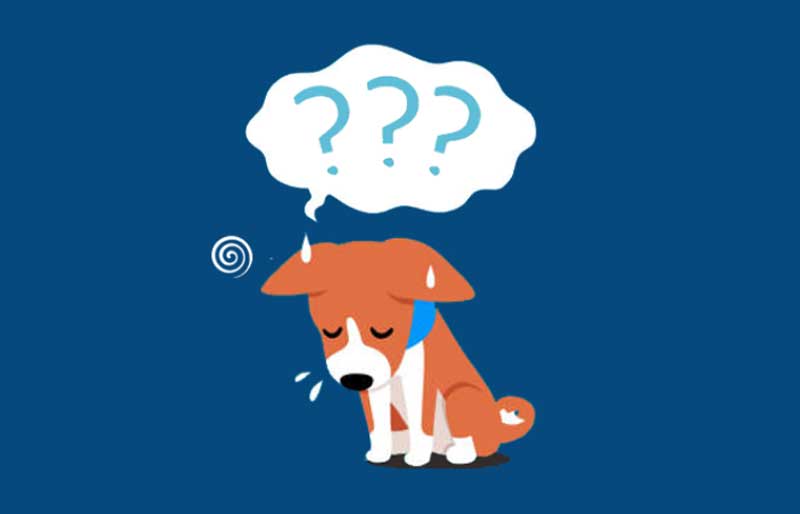
Separation anxiety can be a very painful experience for both the dog and the dog parent.
The exact reason why some dogs experience separation anxiety while other dogs don’t is not yet fully understood.
But there is evidence which indicates that the below seven factors can greatly increase the chance of your dog developing separation anxiety.
Past stay in a dog shelter or kennel
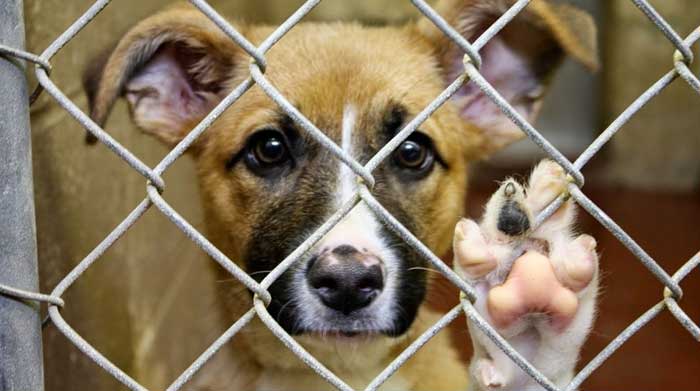
A rescue dog from a shelter is more likely to have a sense of anxiety.
This can cause him to get extremely attached to one person who can provide him constant company and support.
Shelter dogs are usually surrounded by other dogs, volunteers, and staff throughout the day.
So if a shelter dog gets newly adopted and then left alone, he may experience separation anxiety due to this sudden drastic change.
History of several foster homes
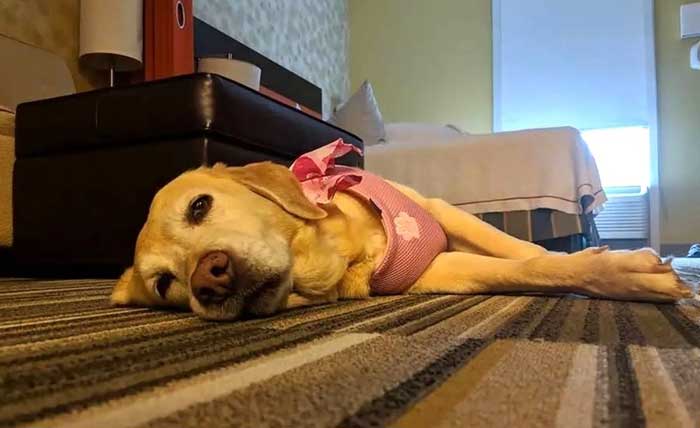
Dogs who have been through several foster homes are more likely to develop separation anxiety.
The repeated change of guardians and surroundings can be a traumatic experience for the dog.
This can cause him to become apprehensive of any abrupt change and may trigger a panic response if he is suddenly left alone.
Never left alone before
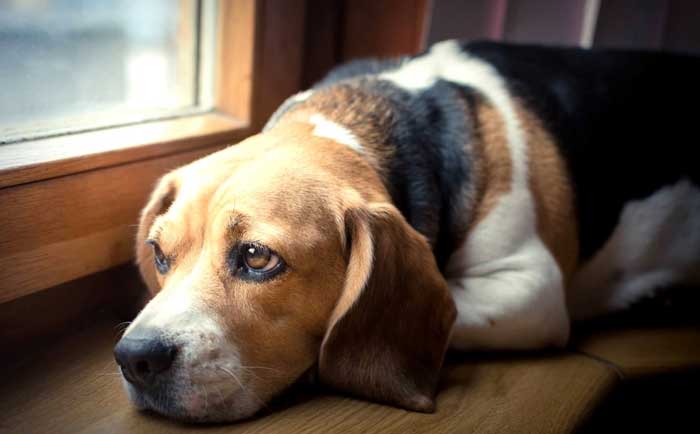
A puppy that has never been without human companionship can experience separation anxiety when left alone for the first time.
An untrained puppy that is left alone may panic or try to have some fun in its own ways.
And some of the acts it does for fun may not be fun for you.
Abrupt change in schedule
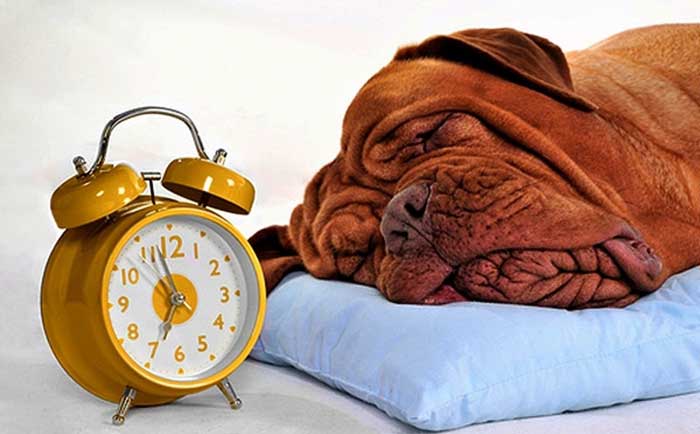
If your daily schedule has suddenly changed because of a change in your job or personal situation, then it can alter the times during which you are with your dog.
Such a sudden change can upset your dog and cause him to miss you. As you are not around when your dog expects you to be around, it can lead to separation anxiety.
Change in family situation
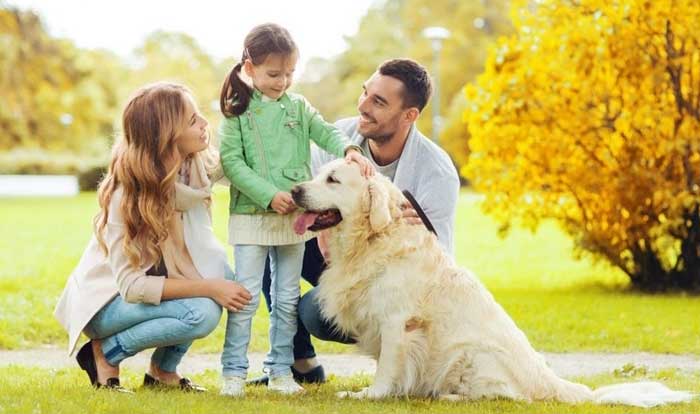
Any sudden change in your family dynamics, like the death of a family member, divorce, or a child leaving for college, can cause your dog to become uneasy and trigger anxiety.
The arrival of a new family member, baby, or pet can also cause your attention to be diverted more towards the new member and away from your dog.
This may cause your dog to feel ignored and cause him to experience separation anxiety.
Change of home
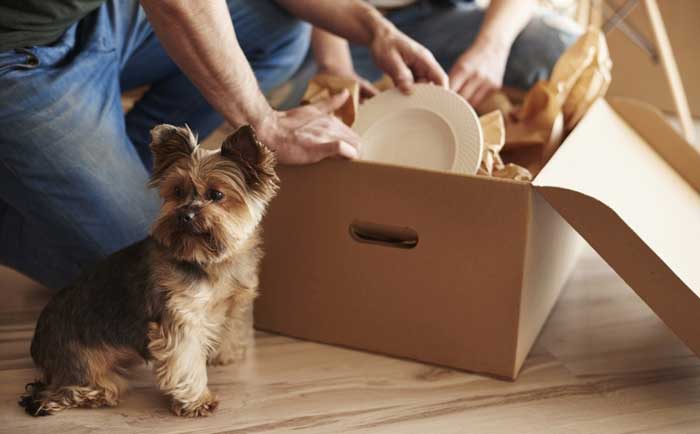
Dogs can get attached to their homes just like people do. If you shifted homes recently, then it can upset your dog and can cause panic.
Even an otherwise calm dog can suddenly develop separation anxiety after moving to a new house.
So you need to be careful when leaving your dog alone in a new home for the first time.
Your dog’s breed
Some dog breeds are highly people-friendly and much more likely to develop separation anxiety than others.
These breeds have been human companions for generations. They develop a strong emotional bond with their human, and so they don’t tolerate prolonged periods of loneliness very well.
Labrador Retriever
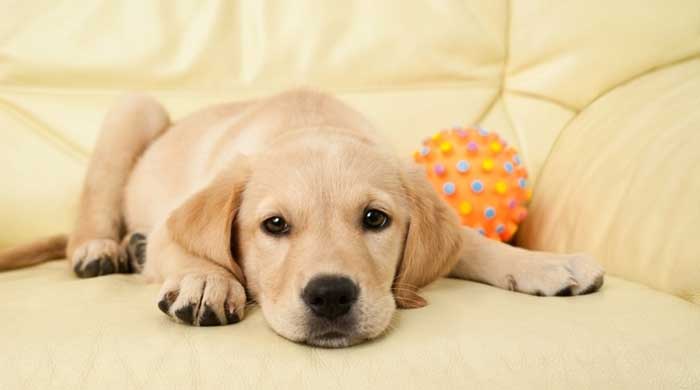
Labradors are one of the most family-friendly dog breeds. They almost always have a joyful mood when they are with their family.
The problem starts when the family leaves. Because a Lab loves his family deeply, he may also miss them deeply when they are gone.
Labradors can have a tendency to display intense symptoms of separation anxiety when separated from their owners for long periods.
German Shepherd
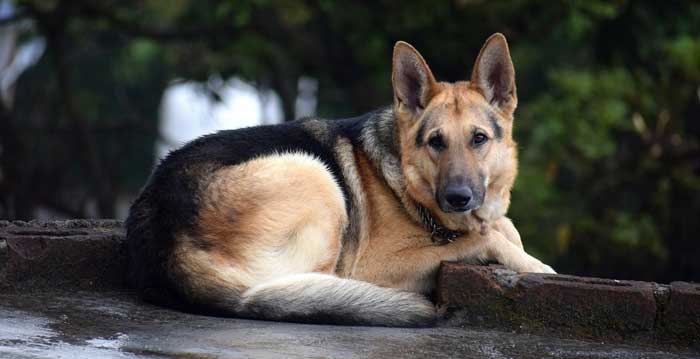
The extremely intelligent and energetic German Shepherd has been working alongside humans for a long time.
It is employed in a wide range of roles, from herding sheep to helping the police.
Due to their extreme bonding with their human, they are highly likely to experience separation anxiety when left alone with nothing to do.
Border Collie
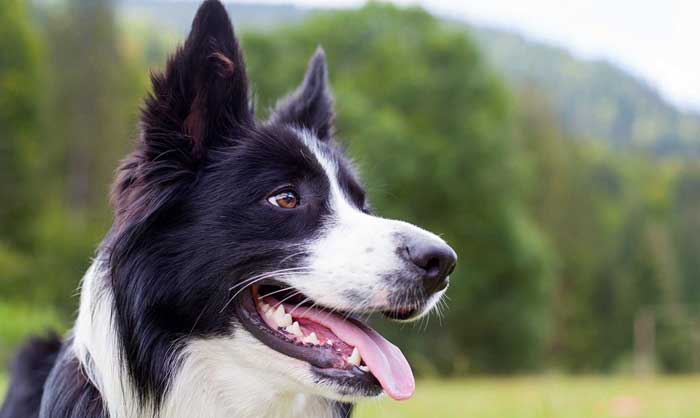
Border Collies are full of energy and intelligence. They are among the top sport and working dogs.
Collies need a lot of mental and physical stimulation every day. If left alone, they can get easily bored and display anxious, destructive behavior.
Cocker Spaniel
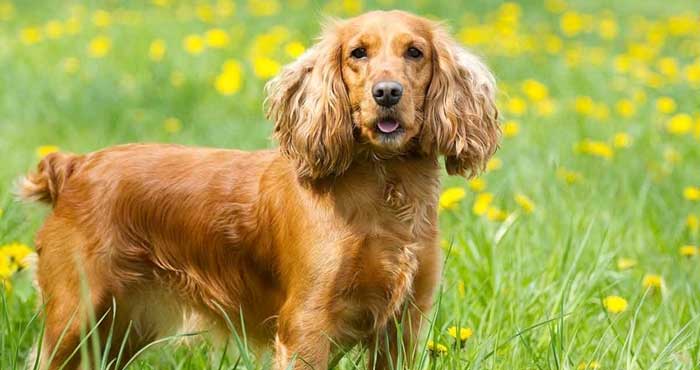
Cocker Spaniel is a hunting dog that has been serving humans for several generations. They form a deep bond with their family.
Spaniels like to spend long durations with their owners outdoors.
Because of their constant desire for human company, they can get uneasy when left alone and display symptoms of separation anxiety.
French Bulldog

French Bulldog is a popular dog breed among apartment owners. This breed doesn’t need a lot of exercise, and is quite happy in the company of their human.
They desire frequent attention from their human and can get affected by separation anxiety when left alone.
Bichon Frise
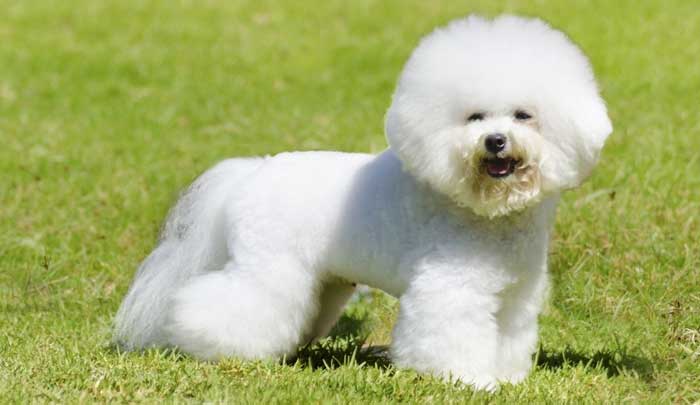
Separation anxiety is very frequent in the Bichon Frise breed. As this breed was primarily raised to be human companions, they cannot stay without seeing their human for long periods.
Their small size makes it easy for owners to carry them around wherever they go. So they are strongly bonded with their human.
When their owner goes out of sight, they can get easily panicked.
Australian Shepherd
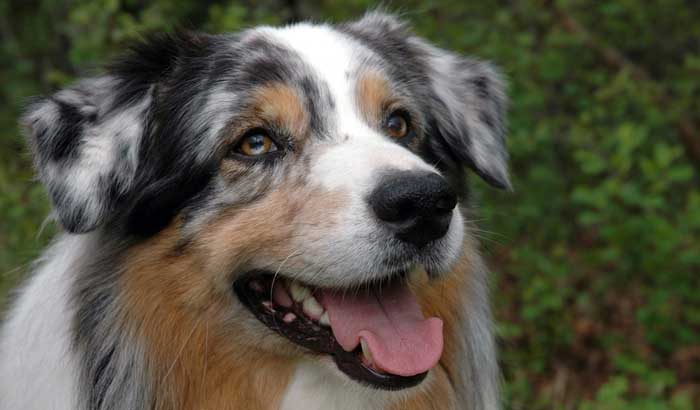
This breed is a highly-energetic working dog that has been herding livestock for many centuries.
Australian Shepherds are a very active breed that is frequently employed in search and rescue operations by law officials.
Due to their high intelligence and energy, this breed gets very quickly bored when they are left alone with nothing to do. And then, they can easily develop severe separation anxiety.
King Charles Spaniel
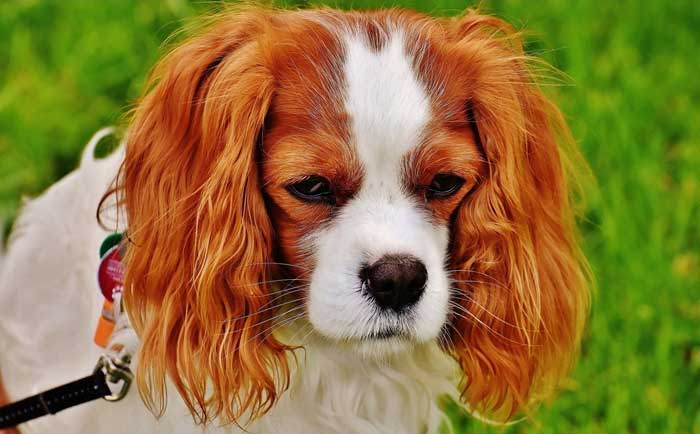
Being a small breed, the King Charles Spaniel was mainly raised as a companion dog for humans.
They are quite used to always being around people and greatly enjoy their company. If left alone for long periods, they can easily become anxious and start panicking.
Italian Greyhound
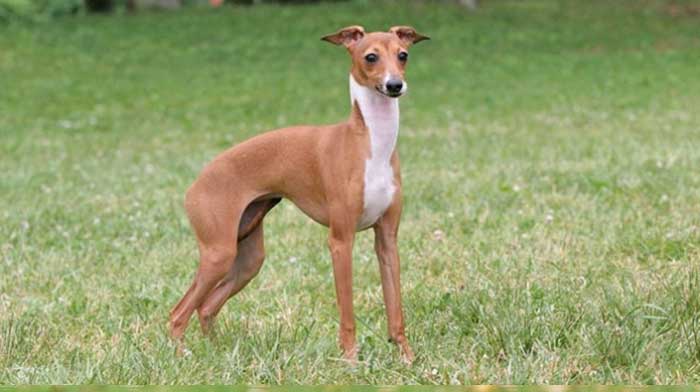
Italian greyhounds are much smaller than other greyhounds and are not that active. This makes them a great apartment dog breed.
They are quite happy just hanging around with their human companions and not doing much.
As they strongly bond with their human, they are highly susceptible to developing separation anxiety when left alone for long.
Jack Russell Terrier
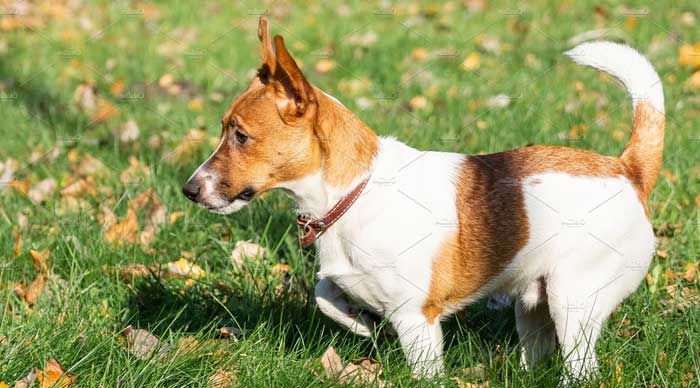
Jack Russell Terriers are a small, energetic breed that loves being around humans.
This breed was raised in the past to hunt vermin, and so they have a lot of energy and passion.
They particularly love to dig and claw in search of rodents. If left alone for long, they can suffer separation anxiety very easily, and it can lead to some destructive behavior.
Toy Poodle
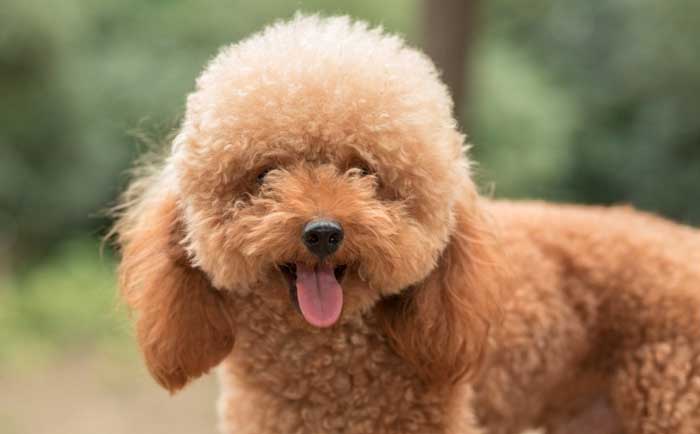
The Toy Poodle is the smallest poodle that was specially bred to be a human companion dog. They desire and need constant human interaction.
If they don’t get human interaction, it is quite natural for them to become panicked and display symptoms of anxiety.
German Shorthaired Pointer
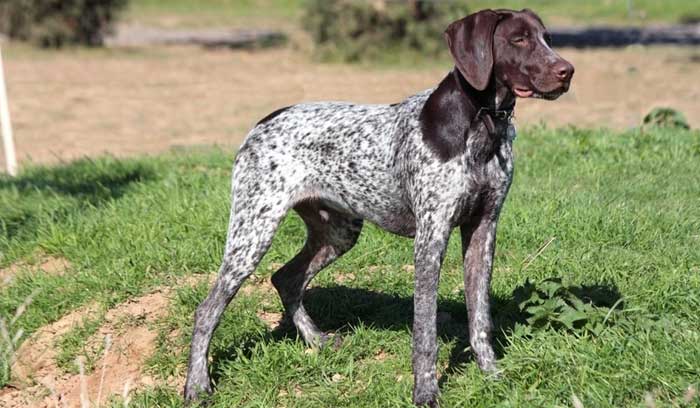
The German Shorthaired Pointer is one of the best hunting dogs. These dogs love being right next to their owner for long hours while exploring outdoors.
And that’s why they find it very difficult to adapt when they are left alone. When they are all alone in an empty house, they can get very uneasy.
Vizsla
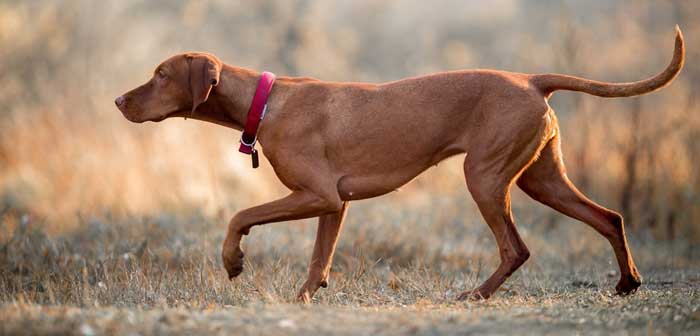
Vizsla is a Hungarian hunting dog breed that has been working alongside humans for many generations.
They form a strong partnership with their human and start “shadowing” their owner wherever they go. Because of a Viszla’s tendency to always stick with their human, they are sometimes called a “Velcro dog.”
When their owner leaves them alone, this breed can get distressed and engage in prolonged howling and destructive chewing.
Havanese

This Cuban dog breed was specially bred to be a lapdog.
They have been human family companions for generations, and so they instinctively crave human company.
Because of this, it is quite natural for them to become extremely anxious when left alone for long.
Chihuahua
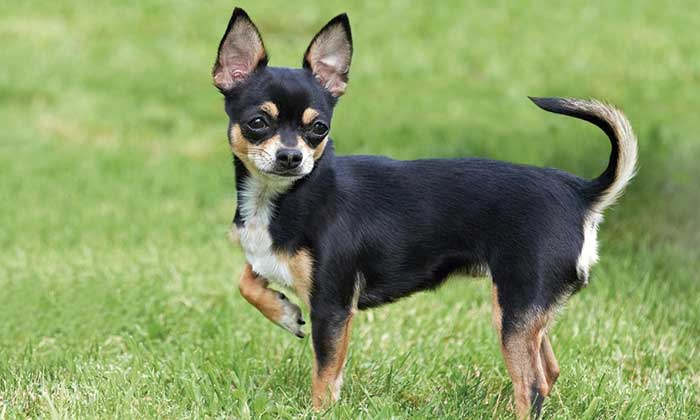
Chihuahuas are one of the most popular apartment dog breeds due to their small size.
They are used to being with their human all the time who usually carries them around with them wherever they go.
Chihuahuas love human company and can get aggressive and destructive if left alone at home.
American Pitt Bull
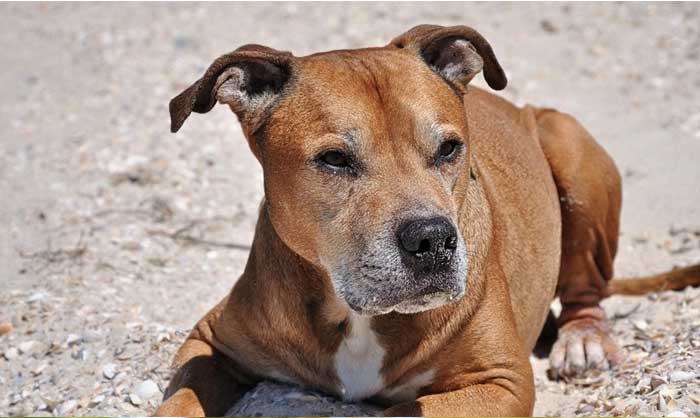
Raised as watchdogs, Pit Bulls form a deep emotional bond with their human and family.
They are full of energy and require daily physical stimulation and exercise. They get bored and uneasy when left alone, and this can lead to destructive behavior.
Maltese
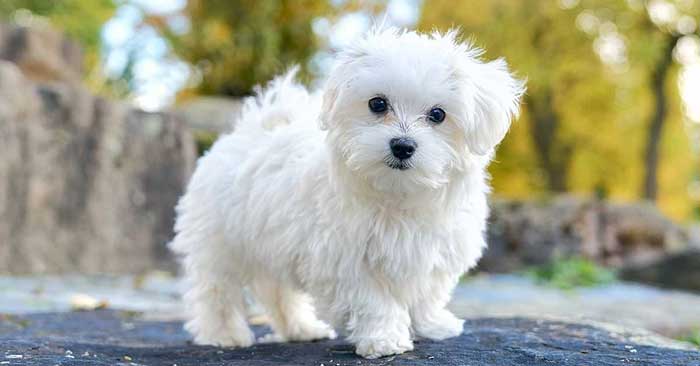
Maltese dogs are usually found in the arms of their owners. Their small size makes them easy for their owners to carry around all day long.
This breed craves human company and does not like being left alone.
Medical conditions
To confirm that your dog is displaying a particular behavior due to separation anxiety, it must satisfy two conditions.
First, your dog should exhibit the behavior every time you leave. And second, your dog should not exhibit the behavior when you are present.
In some cases, your dog may have some other medical or behavioral problems, which may give the false appearance of separation anxiety.
Here are a few medical conditions that can cause symptoms similar to those of separation anxiety.
Teething
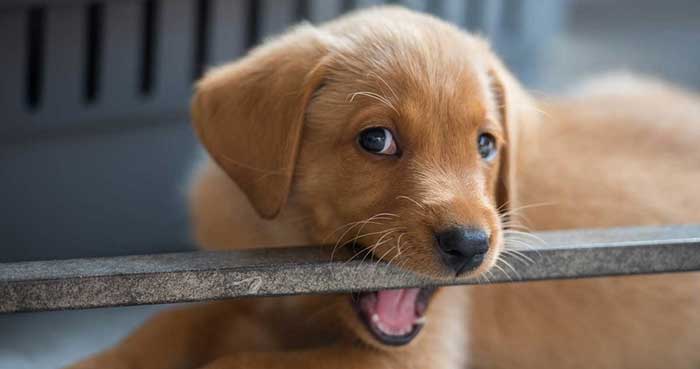
Young puppies may chew up items around the house when they are teething. This may seem like the chewing and destruction caused by separation anxiety.
A simple way to find out if this is the case is to check if this behavior happens when you are home.
If your pup’s chewing is related to teething, then he will do it even when you are home. If his behavior is due to anxiety, it will only happen when he is alone at home.
Incontinence
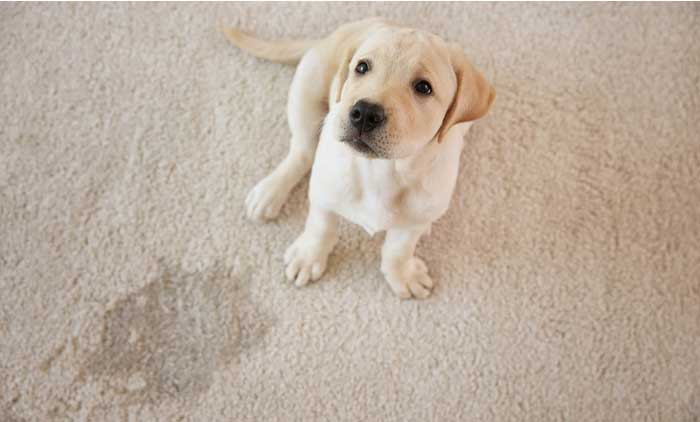
If you have a house-trained dog that suddenly starts having accidents in your home, then it could be due to some medical condition.
Urinary infection, kidney disease, hormonal imbalance, and some medications can cause your dog to lose bladder and bowel control temporarily.
If your pooch really has separation anxiety, then he will only poop and pee in the house when you are not home.
External triggers
Your dog may be stimulated to howl or bark by some event happening outside your home.
Some dogs like to bark at car noises while some bark at beeping noises. Some may even bark at a squirrel they see in a tree outside your home.
If your dog’s vocalization is caused by an external trigger and not by anxiety, then he will bark and howl even when you are home.
Boredom
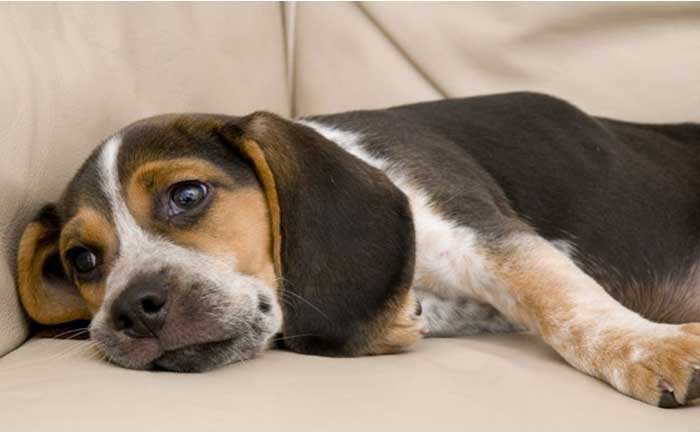
Lack of physical and mental stimulation can cause your dog to exhibit destructive behavior when he has nothing to do.
Some dog breeds require daily exercise and play because they are full of energy.
If you leave them alone at home with nothing to do, they will channel this energy into chewing, howling, clawing, and other undesirable behaviors.
It may be best to consult a veterinarian and rule out these possibilities before you conclude that your dog has separation anxiety.
How to Treat Minor Separation Anxiety In Dogs
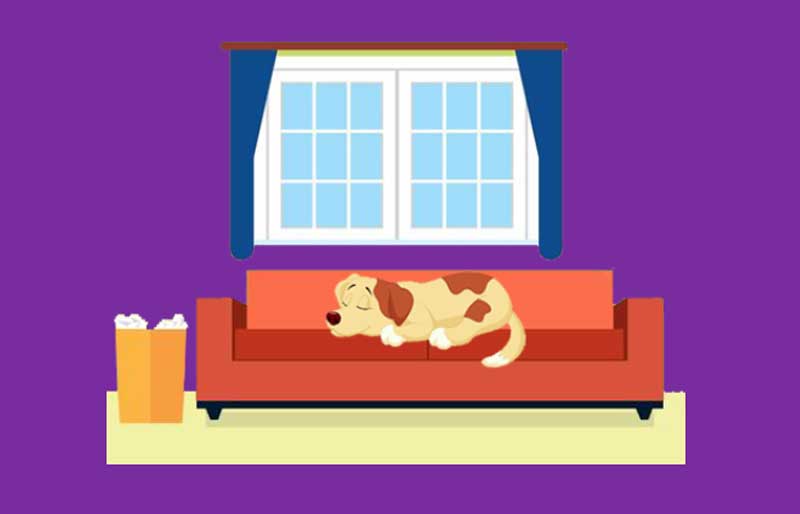
Does your dog get a little bit upset when you are gone? A little howling, some chewed slippers and some scratched windows?
He might make a little trouble around the house but not go completely bonkers.
Your pooch probably has mild separation anxiety.
Here are six proven ways you can deal with minor dog separation anxiety.
Physical Exercise
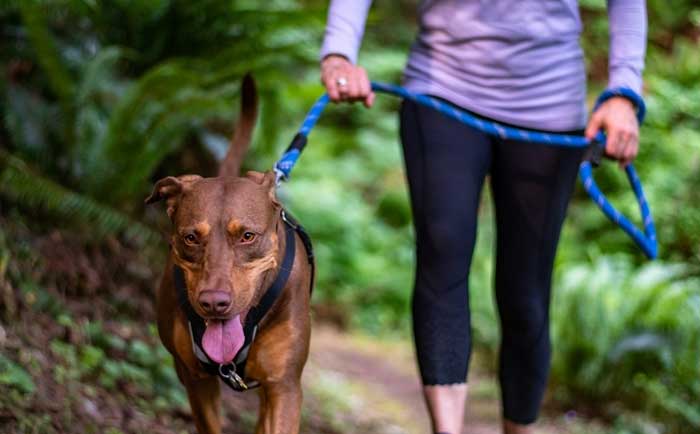
Exercise your dog daily before you leave home. A tired pooch will have less energy to use for becoming destructive and anxious when he is alone at home. Tired dogs like to remain calm.
Take your dog out for a brisk walk every time before you leave. Play with him and make your pooch run around so that he gets a good workout.
To make his walk more challenging, you can use a dog backpack with weights added in it.
After you finish the walk, give your dog some treats to reward his calm state. Make sure he gets plenty of water because he can get thirsty after the workout.
Finish the exercise session 20 minutes before you leave home so that your pooch gets time to settle down.
An intense daily exercise routine can cause your dog to lie down, rest, and even sleep when you are away from home.
Downplay Hellos and Goodbyes
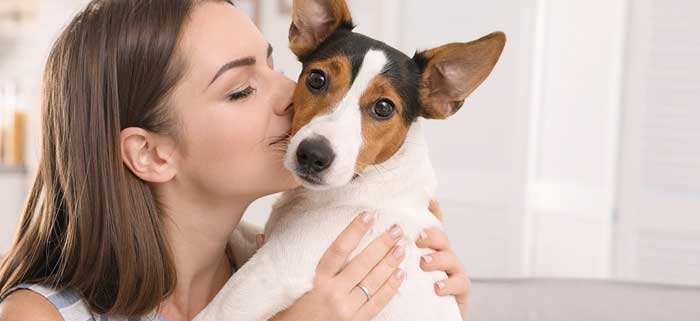
To cure your dog’s separation anxiety, you need to teach him that being away from you is not a big deal.
If every time you leave, you get emotional and hug and kiss your dog goodbye, then you are teaching him that your going away is a dramatic event. Similarly, if you get all excited when you return back home and shower your dog with affection, then you are just training him that your return is an exciting event.
Fawning over your dog when you leave and getting overexcited when you return will intensify your dog’s separation anxiety.
So you need to make your goodbyes and hellos very low-key and casual.
Say goodbye to your dog at least 20 minutes before you leave and keep it short and undramatic.
When you return home, don’t make eye contact or physical contact with your dog for at least 20 minutes.
Even if your pooch gets all excited and comes at you with his tail wagging, you should ignore him and continue with your work casually.
After 20 minutes of arrival, you can give him a quick pat on the back and a small treat. Keep your mood casual and calm.
This will train your dog that your leaving and returning home are quite normal events, and he will learn to stay calm during your absence.
Change Your Exit Routine Daily

Humans and dogs are both creatures of habit. Before you leave for work every day, there are a set of actions you perform in exactly the same order every time.
You may wake up at a particular time, then have breakfast, then dress up, then take your car keys and finally leave through your front door at a certain time.
Your dog is always carefully watching you, and he interprets the meaning of each of these actions. As you go through your daily routine, your dog can get more and more anxious because he knows that you are about to leave.
To break your dog’s separation anxiety, mix up your daily routine so that your pooch remains confused. You should make your morning as unpredictable as possible. This will erase the meaning your dog has mentally associated with each of your actions.
Wake up at a slightly different time each day. Some days, shower before breakfast and some days shower afterward. One day dress up before breakfast, and the next day have breakfast in your pajamas.
On certain days, put your car keys in your suit pocket before you dress up; on certain days, do it after you suit up. Leave through a different door each day, if possible.
Mix and randomize your entire morning routine so that your dog can never predict what you are going to do next.
If your dog cannot interpret the meaning of your actions, he won’t be able to build up tension and anxiety, anticipating your exit. This will help your pooch remain calm.
Build A Calm Personal Space For Your Dog
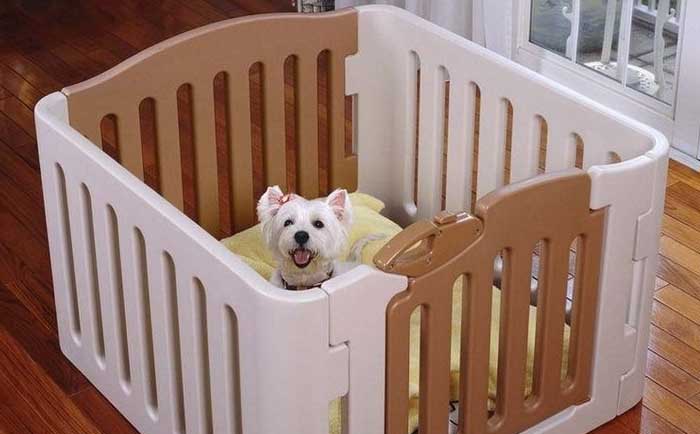
Does your dog get anxious and destructive every time he is alone? Then it is best to confine him to a small area instead of giving him free run of the whole house.
Create a personal space for your dog using stair gates, baby gates, or a playpen. If you have a small room with a window like a laundry room, then you can confine your dog in that room.
This will prevent your pooch from hurting himself and from damaging your belongings.
Put a comfortable dog bed in his space so that he can rest when needed. Leave him water and a Kong stuffed with his favorite treats to keep him busy. You can also leave his other favorite chewable toys in this space. Chewing helps calm down your dog’s anxiety.
Leave some of your dirty clothes to provide him with your familiar scent. This will comfort your dog and make him feel safe when he is left alone in the house.
Leave a radio or an audio-book at a low volume in the background. This can make your dog feel like he has company.
It can also lessen any startling noises from outside that might excite your dog.
Establish A Safety Cue
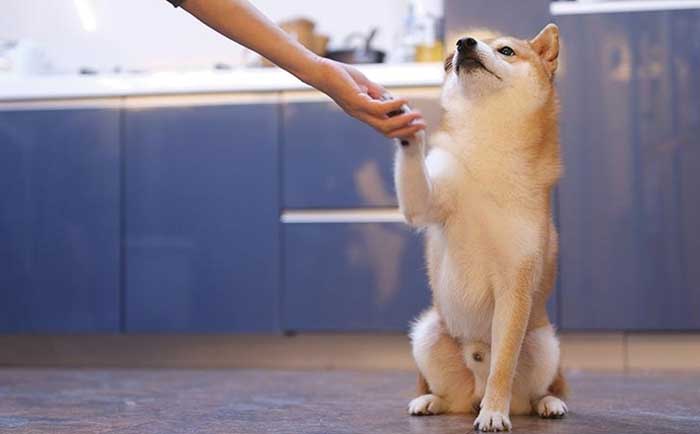
Set up an action or word which you will use every time before you leave. This cue will let your dog know that you are going to return soon. This will reassure your dog and help him stay calm.
Your dog associates certain cues with your absence. For example, when you take out the garbage, your dog knows you will come back soon, and so doesn’t get nervous.
By using a safety cue each time you leave, you can train your dog to remain calm when you are gone.
Use this particular phrase or action only when you know you will return within a time period that is comfortable for your dog. Use a phrase like “I’ll be back” or an action like giving your dog a particular chew toy, or leaving the radio or television on.
Don’t use the safety cue when you know you will be gone for a period of time longer than your dog can tolerate. This will erase the effectiveness of the safety cue.
Practice the safety cue daily during your departures. Initially, use it only for shorter departures. Gradually as your dog gets comfortable with your absence, you can start using it for longer departures.
Companionship Support
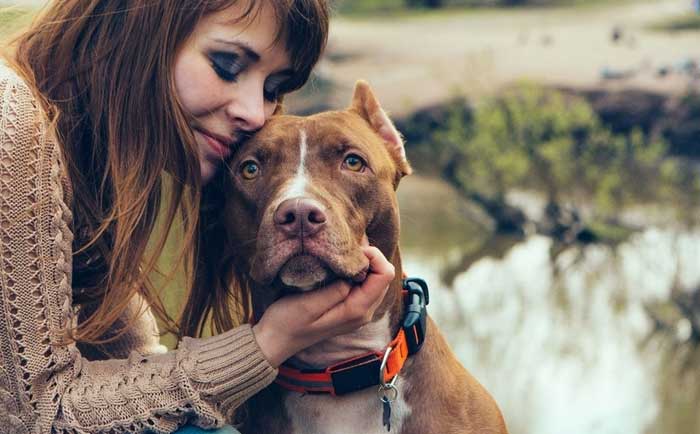
Leave your dog with a neighbor, relative, or friend when you are gone for longer durations.
If possible, try to take your dog to work on some days.
You can also explore doggy daycare if your pooch tolerates it well.
If you are thinking of getting a second dog, then make sure your new dog is already used to being calm and relaxed when left alone.
Your older dog will then pick up the body language from the new dog and learn to remain relaxed in your absence.
How To Deal With Severe Dog Separation Anxiety
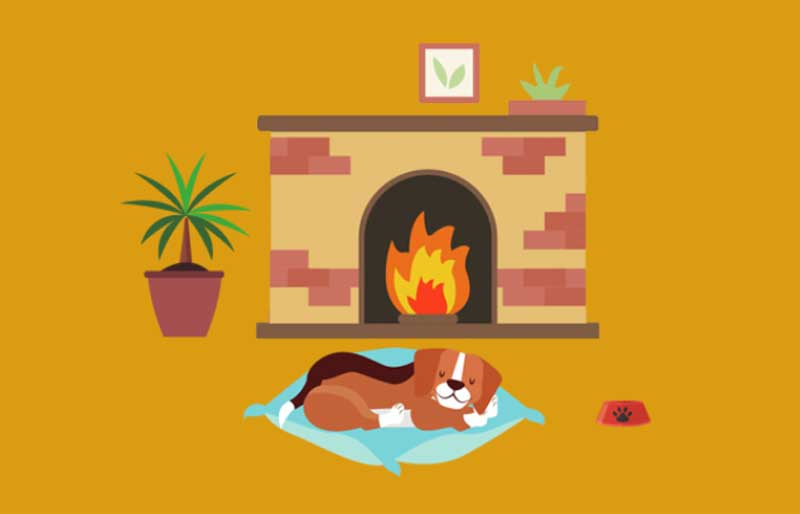
Does your dog chew up furniture, claw up door frames, rip out cushions, poop, and pee around the house, and make your neighbors complain about his barking all day long?
He may be suffering from severe dog separation anxiety.
Let us look at a step-by-step process called desensitization that will help you treat his anxiety.
Before You Begin The Desensitization Process
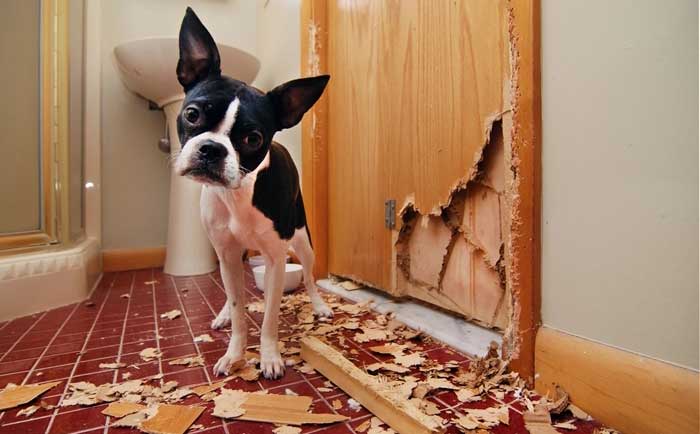
It is best if you can consult a pet behavior therapist and take his help before you start the desensitization process.
If you don’t want to do that yet, then with a lot of patience and commitment, you can yourself help your furry friend get better at being alone.
When you put your dog through a desensitization training process, it can help desensitize his anxiety triggers and heal his panic symptoms permanently.
Depending on the severity of anxiety, your dog can take anywhere from 2 to 6 weeks to show significant improvement in symptoms.
Before you begin this process, it is essential to set up a calm environment for your dog that will ensure he won’t get any anxiety attacks when you are not with him.
You may have to leave your dog at a doggy daycare, hire a dog sitter, or leave your dog with a friend. Find out which option works best to keep your dog the most calm when you can’t be by his side.
The more peaceful your dog remains throughout the training period, the faster his desensitization training will progress.
Steps For Dog Separation Anxiety Desensitization Process
Step 1: Discover Your Dog’s Pre-Departure Triggers
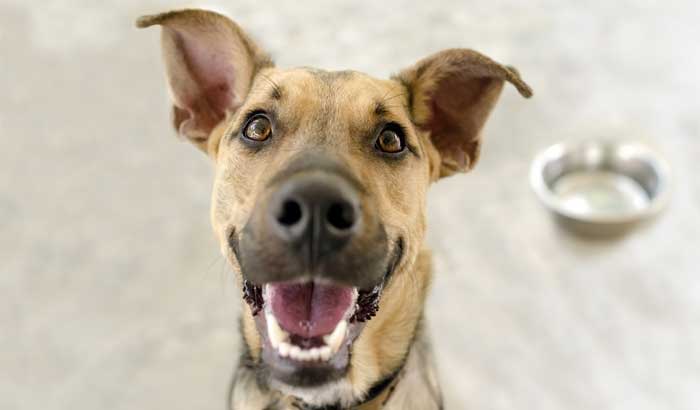
As you begin your daily routine to leave the house, there are certain actions you perform like picking up your car keys, or putting on your shoes, or starting your car, which act as indicators to your dog that you are about to leave.
These indicators act as anxiety triggers and start making your dog more and more nervous and panicky as you go through each action.
Begin by identifying which specific actions trigger anxiety in your dog and how intense is his reaction.
Rate your dog’s reaction to each action on a scale of 1 to 5, as given below.
Level 1: Dog doesn’t notice; triggers no anxiety
Level 2: Dog notices and remains calm
Level 3: Dog notices and stares
Level 4: Dog shows some signs of anxiety, like drooling or panting
Level 5: Dog shows multiple intense signs of anxiety
For e.g., when you reach for your car keys, your dog may display a level 3 response. But when you put on your shoes and start to walk towards the door, your pooch may show a level 5 response.
Note down your dog’s response to each action in your daily departure routine.
You will do the desensitization process for each action that produces a level 2 or higher response.
Step 2: Desensitize Individual Pre-Departure Triggers
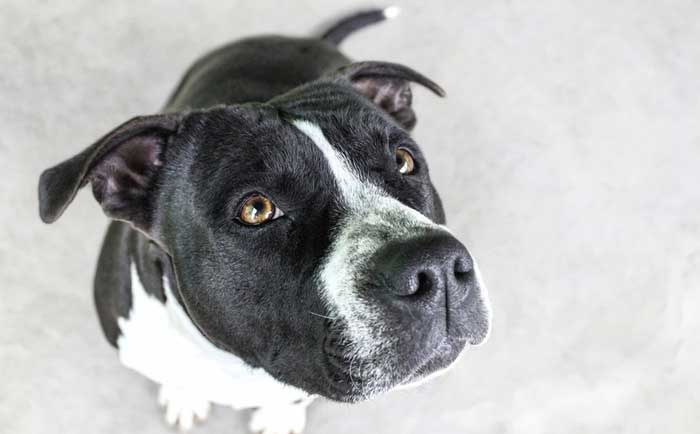
For each pre-departure anxiety trigger that you identified in the earlier step, you should now go through the below 3-step process.
Do this process only at a time when neither you nor your dog will have to leave the house.
1. Initiate the action that triggers anxiety in your dog. Notice when exactly does your dog become uneasy.
For, e.g., if reaching for your car keys makes your dog nervous, then see if he reacts when you actually touch the keys, or when you just reach for them, or sometime in between?
2. From that exact point, when your pooch starts to get nervous, you should take a tiny step backward.
So if you reach for your keys and your dog starts panting just when your fingers are about to touch the keys, then take away your hand and move away from the keys.
3. Repeat the action three times, and each time take care not to upset your dog too much.
Only take your hand close enough to the keys to get your pooch’s attention and a mild reaction. If your dog starts getting stressed, then stop immediately and walk away. Go back to doing your regular home activities.
Repeat this 3-step process at three random times every day. Initiate your dog’s pre-departure trigger, wait till you get his attention, and then move away. If your dog gets too anxious, go back to doing your usual tasks.
With daily practice, your dog will gradually become desensitized to this trigger. Continue to train your dog on each trigger until you get a level 1 response from your dog for each of his pre-departure triggers.
Step 3: Desensitize Trigger Sequences
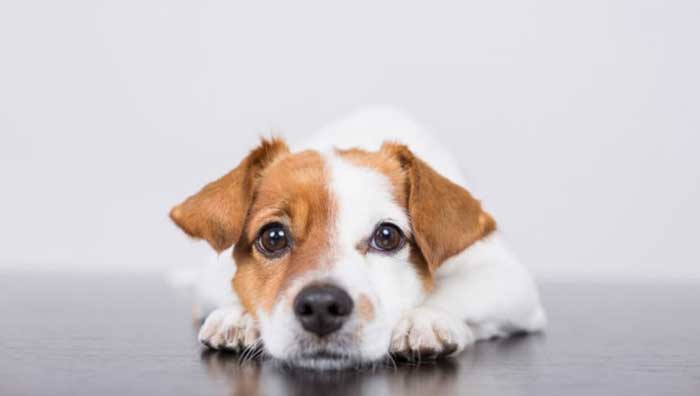
Once your dog remains calm for every individual pre-departure trigger, then you can start to blend the triggers.
Mix them together in random sequences before you perform them in the proper order.
For e.g., if you normally put your shoes on and then take your car keys, then during training, you should first pick your car keys, then put on your shoes.
Once you get your dog’s attention, then remove your shoes, take out your car keys, and return to your normal activities at home.
Combine different pairs of activities randomly and note your dog’s reactions. Work on each pair until your dog gives a level 1 response to each pair.
Slowly build up to sequences with three or four activities. Eventually, your dog will not even look at you as you perform these activities.
Then your dog is ready for more complex and intense challenges.
As you perform longer pre-departure trigger sequences, once in a while, practice just one single trigger, to give your dog an easy ball.
These easy repeats will help make learning simpler for your dog instead of only making it progressively harder.
Step 4: Desensitize Your Departure
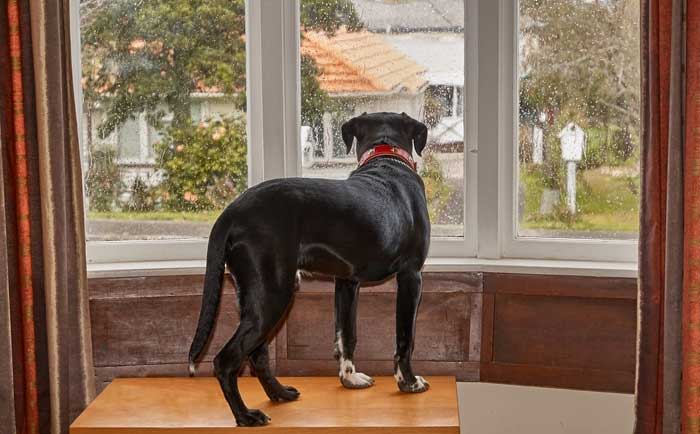
After your dog has been desensitized to all your pre-departure triggers, its time to practice your actual departure.
Get a baby monitor or dog monitor to keep track of how your dog reacts when you are out the door.
First, take a step towards the door and then step back. Next, take two steps towards the door and take one step back. Keep increasing the steps gradually and note that your dog remains calm.
If your dog becomes uneasy at any point, then walk away and repeat the session at a later point during the day.
Once you can walk to the door with your dog remaining calm, then raise your hand towards the doorknob. Drop your hand and remain still, after few moments reach for the doorknob again. Note that your dog remains calm. If he gets stressed, then leave and repeat this later.
Once your dog is calm when you touch the doorknob, you can slowly practice turning it. First, turn a little then drop your hand. After a few moments, turn the knob a little bit more. Work your way till you can turn the knob and open the door just a little while your dog remains calm.
Now you can practice opening the door in stages. First, open the door and inch and close it. Then open two inches and close it. Check that your dog remains calm. Gradually work towards opening the door completely and step outside.
Initially, you should open the door, step outside, and then immediately get back inside. Slowly increase the duration for which you are outside. Leave the door open so your dog can see you. Make sure he remains calm.
Then practice closing the door behind you. First, you can close the door and then immediately reopen. Gradually you should start increasing the pause for which the door remains closed before you step back in.
Once your dog can tolerate you going out, and the door staying closed for over a minute, then you lock the door and walk away from it. Make sure to return back in one minute. Note your dog’s reactions using the baby/dog monitor you installed earlier.
Slowly start increasing the time you stay out in increments of 1 to 5 minutes. Eventually, you would be able to stay out for half an hour while your dog remains calm inside.
With regular practice, you can further increase the duration of time you can leave your dog alone. Make sure he has enough activities to do inside the house when you are gone.
You can hide treats around the home, or give him a chew toy stuffed with his favorite treats. It is also good to leave behind some piece of your dirty laundry in his dog bed. It will have your scent, which will make him feel secure during his stay alone.
Step 5 (Optional): Medication
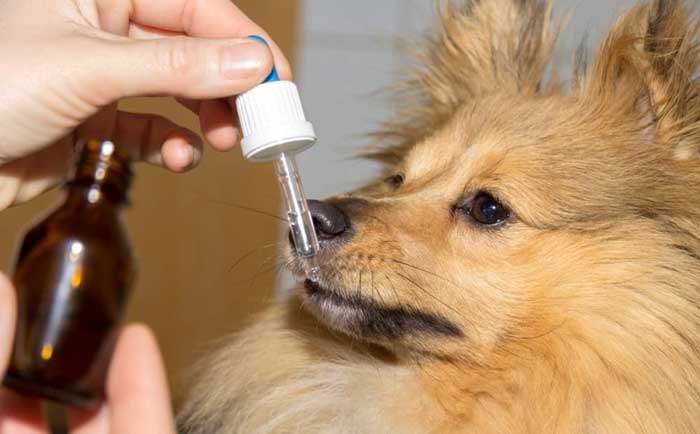
In some cases, desensitization therapy alone may not be enough to keep your dog calm. Older dogs that have been through several foster homes may have deep emotional scars. For such dogs, it might be necessary to support the desensitization training with medication.
OTC and Prescription Medicines
It would be best if you use medicine as a support for training and then gradually taper your dog off the medicine. Your vet will be able to advise you on the most suitable options.
It is better to start with natural calming supplements like valerian, chamomile, and L-theanine because they are less habit-forming and can be tapered off easily.
If these products don’t help, then talk to your veterinarian about an appropriate prescription medicine that can lower your dog’s anxiety.
Only switch to synthetic chemical-based drugs if the natural ones don’t produce the desired result in your dog. Prescription drugs are usually habit-forming, and you may need to keep your dog on them forever.
Pheromone products
Pheromones are odorless and colorless chemical signals that dogs naturally produce to communicate with each other.
Dog appeasing pheromones (DAP) has been scientifically proven to reduce anxiety in dogs.
DAP is similar to the pheromone a female dog releases when nursing her puppies to calm and comfort them.
DAP products are usually available in the form of diffusers. The diffuser keeps running in the background and releases the calming pheromone that soothers your dog’s anxiety when you are away.
Expert Tips For Long Term Success
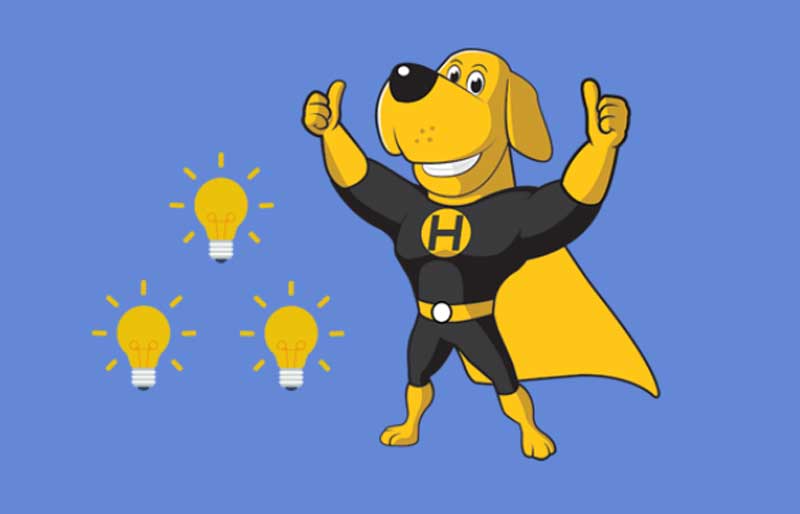
When you bring home a young puppy or an older shelter dog, it is essential to follow these simple tips.
This will ensure that your pooch can remain comfortable when left alone.
Follow these steps to teach your furry friend how to stay calm when he is away from you.
Basic Guidelines
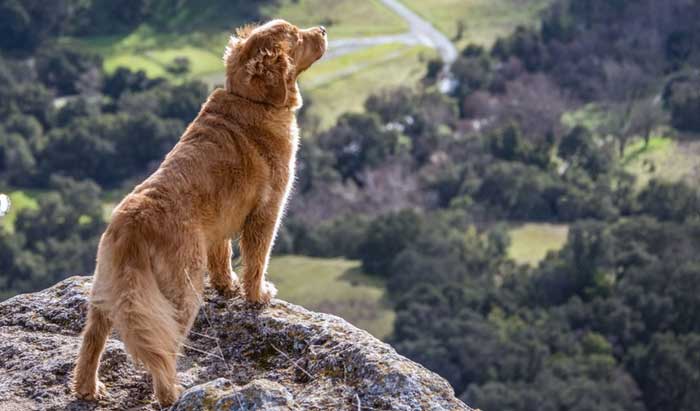
Many new dog parents unknowingly teach their pooch to be totally dependent on them.
They bring home a new puppy during the weekend and spend almost every waking moment with it. Then on Monday, they just leave for work, leaving the puppy alone. This can lead to disaster.
Spending time with your new furry friend is good for welcoming him into the house.
But if you hover around your pooch like a shadow for days, don’t introduce him to anyone else, and then suddenly disappear one day for many hours, then it can leave your dog panic-stricken.
Whether you have just welcomed a new dog into your home or started healing the anxiety of an existing pet, following these simple tips will ensure your pooch remains calm in your absence.
Never Punish
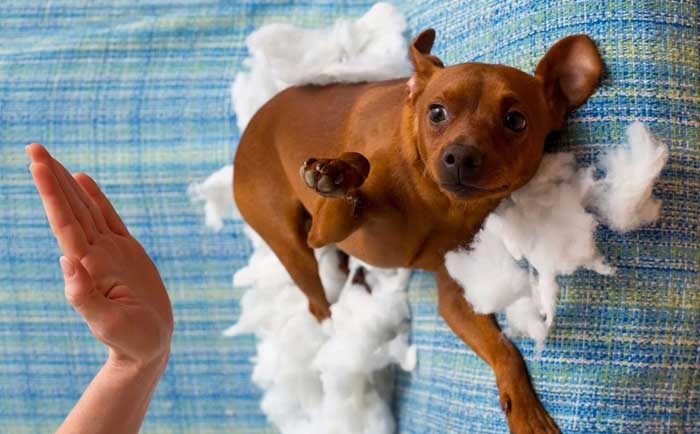
If your dog gets separation anxiety and messes up your home, then it is critical that you don’t punish him.
Your dog is not trying to get vengeance on you for leaving him alone. He simply had a panic attack.
Punishing your dog in any way, can make the situation worse.
If you return home and get disappointed at the havoc your dog caused, your dog may sense that you are upset and display appeasement behavior.
Your pooch may look away from you, flatten his ears, put his tail between his legs, and lower his body to make himself look smaller. This is not a display of guilt.
Your dog only displays this look to diffuse your anger because he feels threatened by you. He doesn’t understand that what he has done is wrong. Punishing your dog won’t stop the destructive behavior caused by his anxiety.
If you punish your dog, he may become anxious both when you leave and when your return. This can make his symptoms a lot worse.
Provide Diverse Experiences Early
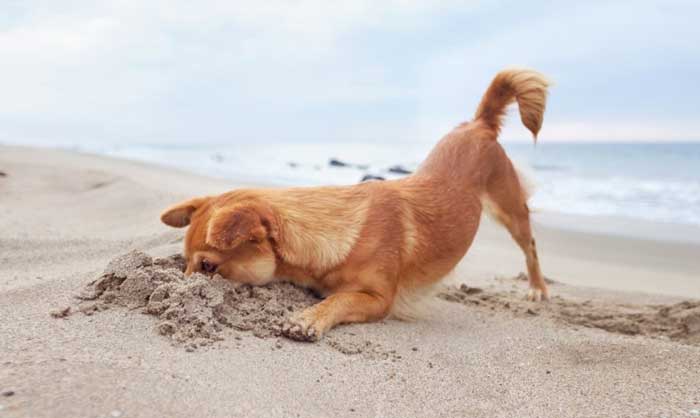
Both a new puppy and a dog recovering from separation anxiety need to be exposed to a diverse range of activities and people.
If you live alone, it is recommended to invite some friends or neighbors over during the initial days after you bring your new dog home. This can help your dog get familiarized with new people and make it comfortable for him to stay with them in the future when needed.
Take your dog outdoors to different kinds of spaces, like a park, a restaurant, a beach, on a boat ride, or a hike in the woods, etc.
Your goal is to introduce your pooch to a wide range of people, smells, and sights.
Both a young puppy and a shelter dog is likely to have little experience of the outdoor world. When you bring your pooch home, he will quickly imprint on you and your home.
If you don’t introduce him to other people and places, your dog can get conditioned to believe that only you are a “safe” person, and your home is the only “safe” place.
Now when you leave your dog alone at home or if you have to leave your dog somewhere else for a while, this can cause your pooch to become anxious and stressed.
By introducing your pet to several distinct people, places, and experiences early on, you train him to understand that other people and places can be safe too.
Train To Relax Alone
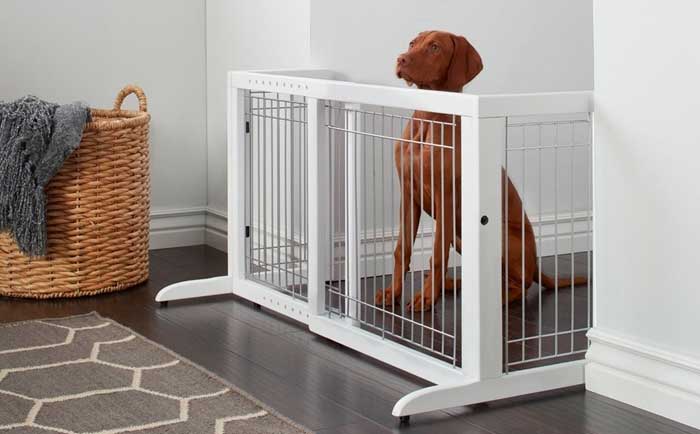
Most people who get a new dog, like to spend every moment right next to their dog whenever they are home.
After all, dogs are our faithful and loving companions. They love us, and we love them, so why not spend every moment we can with them.
There is one small problem with that. Doing this with some shelter dogs and young puppies may accidentally train them to become totally dependent on you.
If you train your dog to always expect your company, then he can feel abandoned any time you leave him alone. And this can trigger separation anxiety.
It is simple to train your pooch to be calm when left alone. You just need to spread out the time you are actually next to your dog.
Create a personal space for your dog using baby gates or a playpen. Put a dog bed and some water inside the playpen. Leave his favorite chew toys inside to keep him occupied.
Place this playpen in an area where your dog can see you. Every day put him in the playpen for 5 minutes and keep a close eye on your pooch.
Even if he whines or barks, ignore him. Once he is calm, you can pet him and give him a treat. Continue with your daily tasks while your dog is in the playpen.
Make sure no other family members go near your dog during this time. You are training him that it is fine to be alone.
Gradually increase the time you keep your pooch inside the playpen in increments of 5 minutes.
Occasionally step away from the playpen so your dog can no longer see you. Note his reactions. Return back before your pooch gets upset.
When you return back, if your pooch is calm, then feed him a treat and pet him. This will teach your dog that it is good to remain relaxed when you are away.
In the beginning, you can come back in a couple of minutes. Slowly increase the time you are away while making sure your pooch remains calm.
Once your pooch can comfortably stay inside the playpen for an hour with you out of sight, you have achieved a major milestone.
After every hour, make sure to take your pooch out to potty and play with him for a while.
Crate Train Early
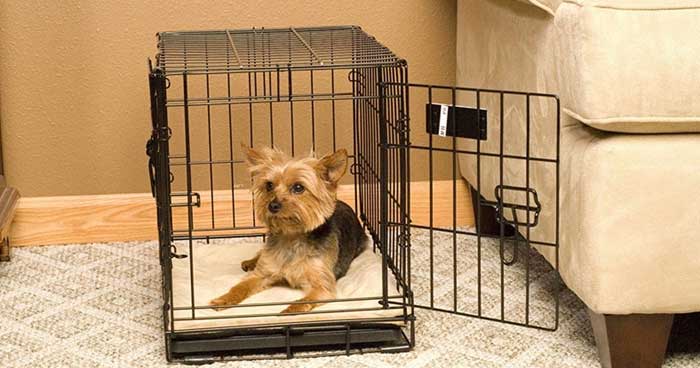
Every dog can benefit from crate training. It is best to crate train your dog when he is still a puppy. However, if you brought home an older shelter dog, then it is still not too late.
Crate training might be difficult if your dog already has severe separation anxiety. In this case, it is best to first train your dog to be inside a playpen, and once he has mastered that, then move on to the crate.
Your dog can be trained to experience the crate as his safe den. When used correctly, a crate can become an effective tool to prevent separation anxiety.
Your dog will feel much calmer being alone in his cozy crate than being alone in a big empty home.
The crate can become a place of tranquility for your dog, where he retreats to relax whenever he feels stressed.



